Whether you’re looking to learn how to build guitar pedals or just into guitar pedals in general, you’ve probably heard the term “true bypass.” While it’s somewhat obvious what the term true bypass implies, personally, I was 100% certain what it was and wanted to better understand what it is. Also, if there’s a true bypass, is there an un-true bypass? What does that mean?
Well, ask no more! I’ll clarify what true bypass is and how it’s different from the other kind of bypass, the hardwire bypass. Also, I’ll explain why true bypass is better and why it’s pretty much universally used in guitar pedals.
What Is True Bypass?
True bypass refers to how a guitar pedal footswitch is wired. Take a look at my article on how to wire a guitar pedal footswitch for true bypass. This is using a 3pDT, which allows both a true bypass and a status LED to be wired in. If there’s no status LED, you can get away with something other than a 3PDT (specifically, using a DPDT), but the 3PDT is pretty much standard for guitar pedal building!
Put simply, true bypass is a way of wiring a switch so that the guitar signal doesn’t go through the effect circuit at all when the switch is in the “off” position. That is to say, the signal goes into the pedal input jack and moves directly to the output jack, never touching the pedal circuit. A very basic true bypass would look like this:

Here, the orange wire is the bypass. When the 3PDT is in the down position, no part of the signal has a chance to go through the effect circuit. This is true bypass.
When the footswitch is in the up position, the signal goes through the circuit and not through the bypass at all.
Notice here that the middle column of the 3PDT isn’t used at all. Take out the middle column and you have a DPDT and still have a true bypass. But there’s no room to wire in a status LED.
While I go through this in more detail in my guitar pedal footswitch wiring article, here’s how to wire a guitar pedal footswitch for both true bypass and a status LED:
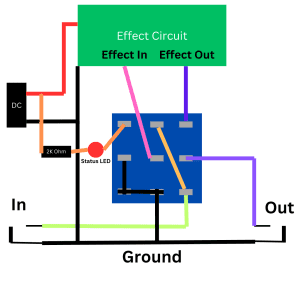
Here the true bypass may be a bit hard to see but, when the switch is in the down position, the input wire (green), goes into the lug in the bottom right of the switch then out through the the middle lug of the third column (purple wire).
What originally confused me is the orange wire going from the bottom right lug to the top lug of the middle column, doesn’t that then send the signal to the the effect? The answer is no. This is because when the switch is in the down position, there is not connection between the top row and the middle row, so the signal stops there.
There are a lot of other ways to wire a 3PDT for true bypass in a guitar pedal, but this is the one I like.
But it begs the question, what’s wired bypass?
What’s Hardwire Bypass?
Hardwire bypass is the opposite of true bypass. Here, regardless of whether the switch is in the on or off position, the signal is going through the effect circuit. The switch is controlling whether the output is coming from the circuit or not.
Wired, it looks a bit like this:
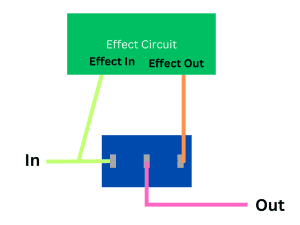
Looking at how the signal travels, we can see that it comes in through the input and then splits to go into the circuit and the switch and, of course, always comes out through the middle lug.
What’s interesting is that when the switch is switched to the left side (as per the diagram), the signal goes into the switch and then out through the middle lug. Sure, the signal still goes into the effect, but it isn’t connected to anything so you don’t hear the effect. When the switch is set to the right position, the wire going into the switch has nowhere to go, but the signal is allowed to continue through the effect and out through the middle lug.
But what’s the problem here? Why don’t we want this and why is hardwire bypass considered inferior to true bypass?
This is a problem because the guitar signal is split and the effect circuit takes some of that signal and affects the sound. Without going into input impedance, consider that the effect is, at the very least, is grounded and also adding resistance to the circuit. Because of this you have a voltage divider situation, which will lower the volume of your signal. It’s also possible for the circuit to create a high or low pass filter, changing the overall tone of your sound.
Both of these things are bad news…
And That’s True Bypass
Hopefully all of that clarifies exactly what true bypass means when it comes to guitar pedals (and electronics in general). In the past, there were other ways of bypassing circuits, and pedal builders got creative in order to avoid the problems with a wired bypass. But now we have components like the 3PDT that allow us to just make things easier. Enjoy them!
Related posts:
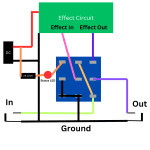 How To Wire A Guitar Pedal Foot Switch (3PDT)
How To Wire A Guitar Pedal Foot Switch (3PDT)
 How To Wire A Guitar Pedal DC Power Jack
How To Wire A Guitar Pedal DC Power Jack
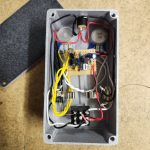 How To Wire Guitar Pedal Enclosures
How To Wire Guitar Pedal Enclosures
 How To Wire 6.35mm (1/4″) Socket
How To Wire 6.35mm (1/4″) Socket
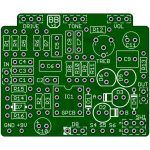 What Is A PCB?
What Is A PCB?
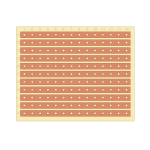 What Is Stripboard And How Do You Read Layouts?
What Is Stripboard And How Do You Read Layouts?
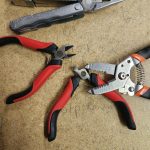 Should I Make Guitar Pedals On Stripboard Or PCBs?
Should I Make Guitar Pedals On Stripboard Or PCBs?
 The Difference Between SPDT, DPDT, And 3PDT Switches And How To Use Them
The Difference Between SPDT, DPDT, And 3PDT Switches And How To Use Them
 How Do Guitar Pedal (And Guitar) Volume Knobs Work?
How Do Guitar Pedal (And Guitar) Volume Knobs Work?
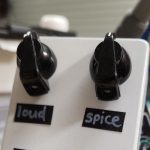 How Does A Drive, Gain, Or Distortion Knob Work?
How Does A Drive, Gain, Or Distortion Knob Work?

